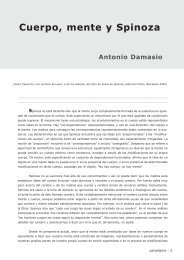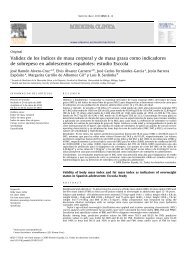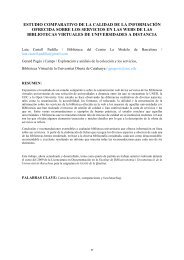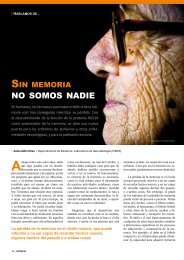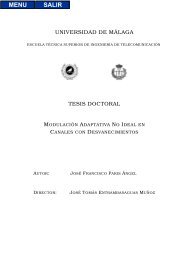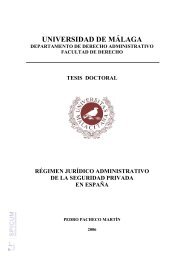Papel de las actividades superóxido dismutasa y catalasa en la ...
Papel de las actividades superóxido dismutasa y catalasa en la ...
Papel de las actividades superóxido dismutasa y catalasa en la ...
Create successful ePaper yourself
Turn your PDF publications into a flip-book with our unique Google optimized e-Paper software.
INTRODUCTION<br />
3.1. RESPIRATORY BURST<br />
After phagocytosis, a process that involves the ingestion of microorganisms,<br />
phagocytic cells liberate the cont<strong>en</strong>t of their lysosomes and a phago-lysosome is<br />
formed. Lysosomes contain several cytotoxic factors, such as oxyg<strong>en</strong> metabolites and<br />
hydrolytic <strong>en</strong>zymes capable to kill and digest microorganisms.<br />
Production of these oxyg<strong>en</strong> metabolites occurs during the respiratory burst, within<br />
phagocytes in the pres<strong>en</strong>ce of bacteria, increasing oxyg<strong>en</strong> rate consumption.<br />
Extracellu<strong>la</strong>r oxyg<strong>en</strong> is used to g<strong>en</strong>erate reactive oxyg<strong>en</strong> species (ROS), O 2·- , H 2 O 2 , OH -<br />
in the cellu<strong>la</strong>r surface. The pres<strong>en</strong>ce of these free radicals is associated with cellu<strong>la</strong>r<br />
ageing; however, their toxicity is useful as a <strong>de</strong>f<strong>en</strong>ce mechanism against bacteria, due to<br />
their great microbiocidal activity.<br />
The respiratory burst starts by stimu<strong>la</strong>tion of the NADPH oxidase located in the<br />
phagocytic membrane. This <strong>en</strong>zymatic activity is able to reduce O 2 in superoxi<strong>de</strong> anion<br />
(O 2·- ) (Roos et al., 2003). Sequ<strong>en</strong>tially, by unival<strong>en</strong>t reduction of O 2 , highly toxig<strong>en</strong>ic<br />
reactive species, are g<strong>en</strong>erated. Within the phagosome, superoxi<strong>de</strong> is, spontaneously or<br />
by superoxi<strong>de</strong> dismutase (SOD), converted to hydrog<strong>en</strong> peroxi<strong>de</strong> (H 2 O 2 ), which may<br />
th<strong>en</strong> react with superoxi<strong>de</strong> to g<strong>en</strong>erate hydroxyl radicals (OH - ) and singlet oxyg<strong>en</strong> ( 1 O 2 ),<br />
both highly reactive and toxic compounds. Superoxi<strong>de</strong> can also react with nitrog<strong>en</strong><br />
oxi<strong>de</strong> (NO), g<strong>en</strong>erated by inducible NO synthase (NOS), to yield peroxynitrite, a very<br />
reactive nitrog<strong>en</strong> intermediate. There are ev<strong>en</strong> indications that single oxyg<strong>en</strong> may be<br />
converted to a ozone-like (O 3 ) compound in a reaction catalyzed by antibodies bound to<br />
microbes or neutrophils. H 2 O 2 may also, together with chlori<strong>de</strong>, be used as a substrate<br />
by myeloperoxidase released from granules to g<strong>en</strong>erate hypochlorous acid, a very toxic<br />
compound for almost all microbes. Subsequ<strong>en</strong>tly, the short-lived hypochlorous acid can<br />
react with secondary amines to form secondary chloramines, which are as microbiocidal<br />
as hypochlorous acid but more stable.<br />
The respiratory burst, due to the g<strong>en</strong>eration of a great amount of free radicals<br />
highly toxic, inactivating proteins and oxidizing nucleic acids and other ess<strong>en</strong>tial<br />
molecules, repres<strong>en</strong>ts an immune system strategy in the fight against infections.<br />
Pathog<strong>en</strong>ic microorganisms have had to <strong>de</strong>velop a fight against free radicals, in two<br />
75




